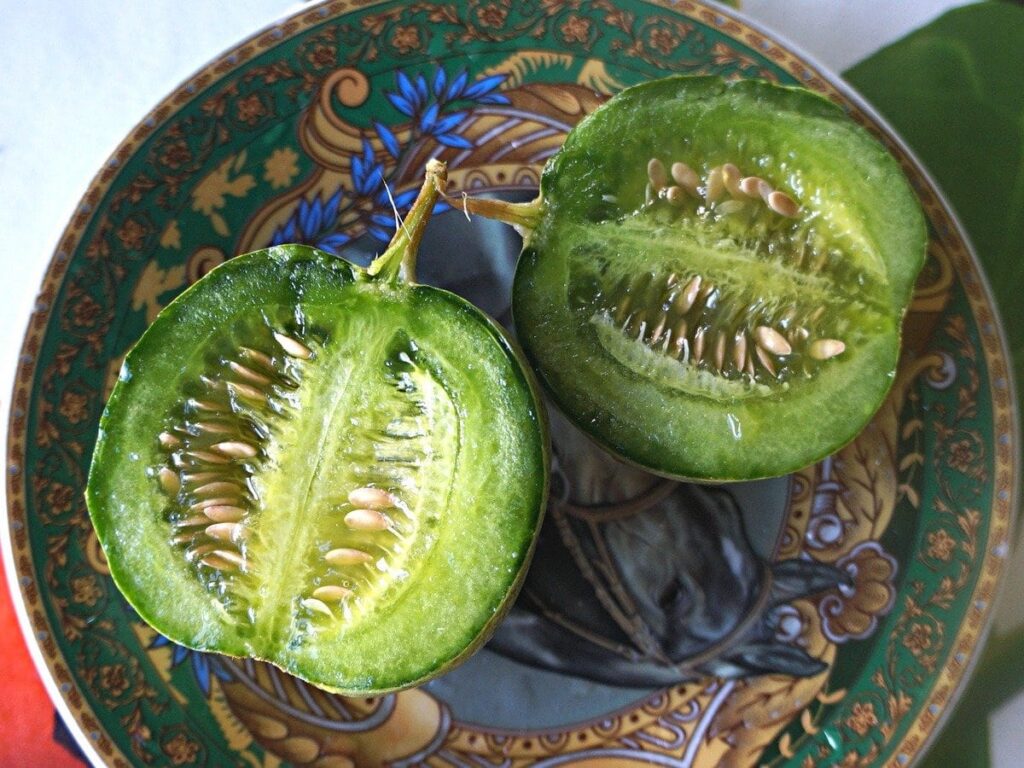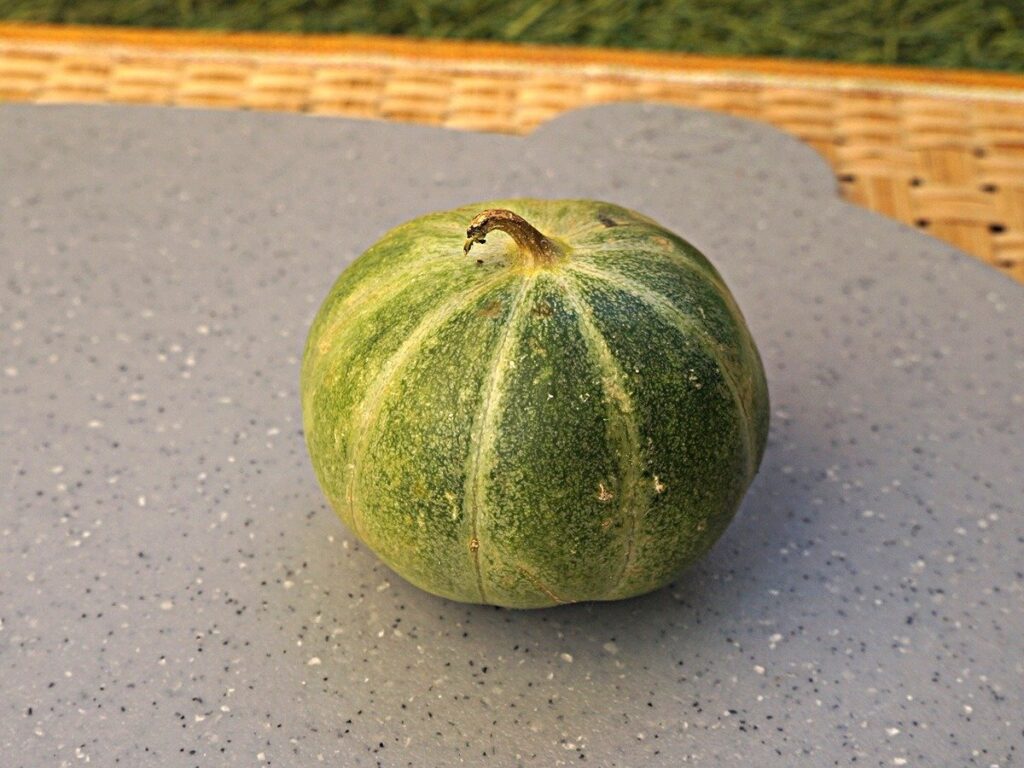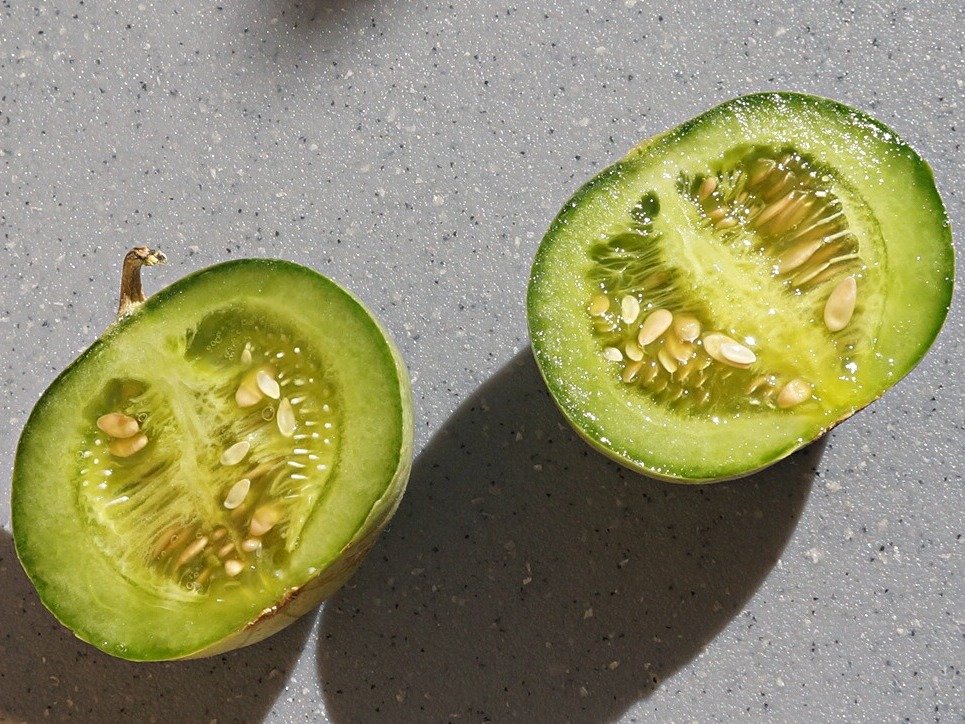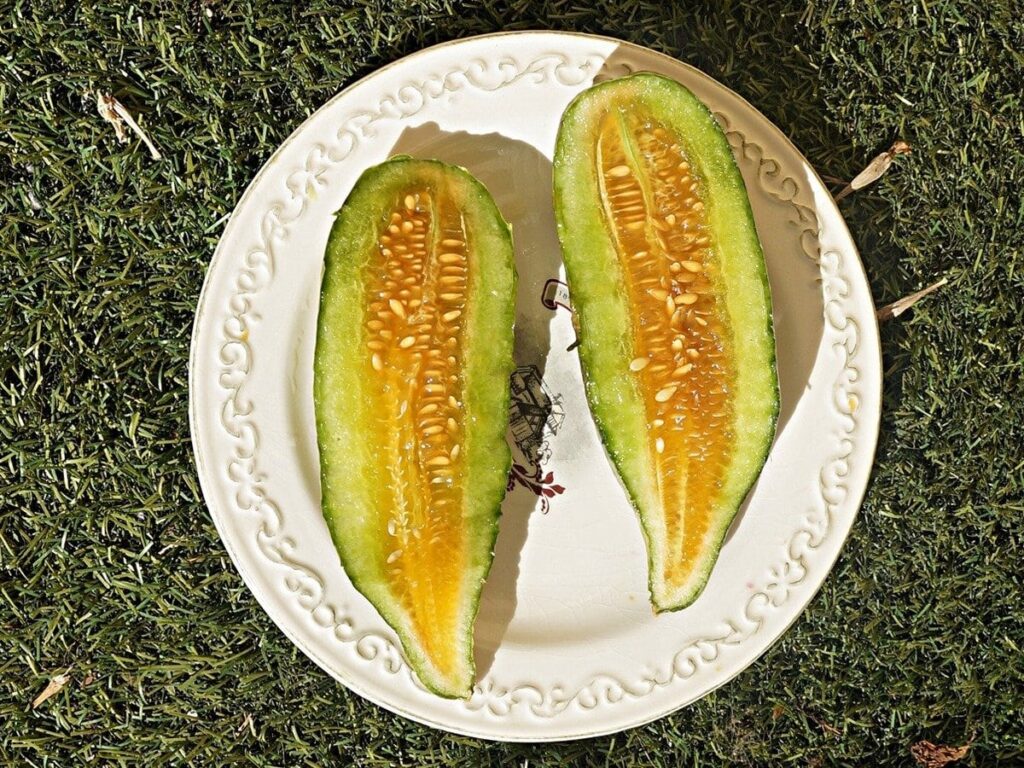Mandurian Round Cucumber: Quick Introduction
I got acquainted with the mandurian round cucumber many years ago, when this culture was still very rare and exotic in our country, and its seeds could only be obtained from collectors. The first variety that I grew was called “Sweetie”, and our whole family was delighted with it. The harvest was collected in boxes, the fruits were sweet and fragrant, like true melons.
Nowadays, gourd has become a more common crop, and a rich variety of its varieties have appeared on the market. In the hope that the new cultivars will turn out to be no worse than the first one, I got the idea to try out almost all the varieties of cucumbers on the market. What was the result of this venture, I will tell you in my article.
Also Read: The Most Expensive Mango in World
What is Mandurian Cucumber
Although the myth that cucumber is a hybrid of melon and cucumber has long been debunked many times, there are still many gardeners who think so. Moreover, such incorrect information can sometimes be found even on bags with seeds! Therefore, I consider it important to remind once again that this is not a hybrid, but an independent species from the Pumpkin family, and it, in turn, also has numerous varieties and hybrids.
This vegetable is very popular in Italy, where it is known under the name “Mandurian round cucumber”, or Ogurdynia Cucumber or “Manduria”. The botanical name for cucumber is Cucumis melo, the same as for melon. Cucumber in Latin sounds – Cucumis sativus. From which we can conclude that cucumber is a kind of melon, and with cucumber, it only has a common family of Pumpkin.
The numerous varieties of mandurian round cucumber boast a rich variety. They differ in shape – round, oval, elongated, pear-shaped. In size – from 50 grams to 2 kilograms. And also in color – green, yellow, striped. They can vary in flesh thickness, sweetness levels, shades and intensity of aroma.
The cucumber varieties that I grew this summer also surprised me with a very rich variety of shape and taste, and among them there were both new favorites and complete disappointment, which were in vain taking up space in the garden. I hope my experience will be useful to readers who are just looking at this culture and trying to understand the varities of mandurian cucumbers.
Mandurian Round Cucumber Varieties
Before proceeding to the description of the varieties, I note that they were all grown in a very favorable summer for melon – not rainy and hot enough, so they had the opportunity to express themselves as much as possible. And if some varieties turned out to be savory or slightly sweet, then this, most likely, is a varietal feature.
Sowing of seeds was carried out in mid-May directly into the ground, the harvest could be harvested from mid-late August, some fruits were removed even before mid-September. The site is located in the Voronezh region, the soil is rich black soil, no fertilizing was applied, watering was minimal only at the beginning of growth.
1. Mandurian Cucumber “Matsaren”
Mandurian cucumber “Matsaren” is a hybrid of ogurdynia with an unusual appearance and taste. While almost all cucumbers have round or oval fruits, this one has narrow, elongated fruits with a narrowed tip, which is a bit like a narrow pear. The rind is aquamarine.

According to the manufacturer’s promise, the average weight of a cucumber is 400-500 grams, which was true, since my melons weighed on average 300-400 grams, 20-25 centimeters long. 3-4 fruits ripened on one bush. When sown in mid-May, they matured in mid-late August.
When fully ripe, the fruit becomes soft. For this reason, I was even afraid to taste the first fruit, considering it missing, but the aroma emanated from it was pleasant, so I took a chance and did not regret it.
Inside, such a mandurian cucumber looks very elegant and resembles some kind of exotic fruit: inside the seed chamber there is a bright orange “jelly” with seeds, the flesh itself is greenish-yellow, and near the peel it becomes bright green. When cut, a rather strong pleasant aroma is felt, a layer of edible pulp is about 1.5 centimeters. The consistency of the pulp is crumbly and very sweet in taste, with an unusual pleasant aftertaste.
The only drawback of the variety: low transportability due to the softness of the fruit. Mandurian of this type were the only ones that burst during transportation from the site to the city. But overall, in my opinion, the variety deserves a “5” grade. I recommend landing.

2. Mandurian Cucumber “Green Dragon”
Mandurian Cucumber “Green Dragon”, or “Green Dragon” – one of the largest varieties of ogurdin. Producers promise fruits weighing 500 grams, but melons grew even weighing about a kilogram. All fruits have a wide pear-shaped shape with a diameter of 15 (approximately) centimeters, the color of the peel is yellow-green with wide dark green longitudinal stripes.

The variety is very productive. On average, there were five such large fruits on one bush. In addition, this gourd had the most “meat” in comparison with all the varieties that I grew. That is, it has the thickest layer of pulp, 2 cm wide, which means, for sure, there will be something to eat.
The pulp is crispy and very sweet, and even unripe fruits are tasty, and they still look more like a melon than a cucumber. The color of the pulp is pale green, the smell is small melon. The information on the packet says the strain has a cantaloupe scent and flavor, but I didn’t notice anything like that. To me, he just looked like a sweet ripe melon.
Also Read: Why are Pumpkin Seeds Good for Men?
By planting this variety, you will get a high yield and a pulp that is as similar to a melon as possible. By the combination of positive signs, this variety gets a well-deserved “5-ku” from me. Highly recommend boarding.

3. Mandurian Cucumber “Green Beauty”
According to the description of the variety on a bag with seeds, the weight of the fruit of this hybrid is 500 grams. In my garden, I collected 6 fruits from one bush of the Green Beauty gourd with an average weight of 350 grams, the largest one reaching 400 grams. Fruits, in addition to round, may have a slightly elongated or pear-shaped shape. I got all perfectly flat, like balls.

The color of the peel, as in the picture, was solid green with slight ripples, but when fully ripe, yellowness appeared in the upper part. The smell is weak. The pulp is bright green, which, at first glance, makes the fruit seem unripe, but at the same time the cucumber is so juicy that it even resembles jelly.
When I dared to try Green Beauty, it turned out that neither the first nor the second was true. Even when fully ripe, the flesh of this ogudin retains an unusual bright green color. The taste, despite the unripe appearance, was simply amazing, very sweet, truly melon and slightly tart. Personally, to my taste, it reminded me of the popular ribbed melon Ethiopka, and the manufacturer characterizes its aroma as reminiscent of the cantaloupe cantaloupe.
Read also SnowBall Melon Benefits
The pulp was not jelly-like, not hard or crumbly, but moderately elastic. The manufacturer’s claims of 18% of sugars also appear to be entirely true. However, I will give this grade “4+” because of the too small size and layer of pulp (approx. 1 cm). I recommend giving it a try.

4. Mandurian Round Cucumber “Lazy Dream”
Mandurian round cucumber “Lazy Man’s Dream” looks very much like a melon of the popular variety “Kolkhoznitsa”. When fully ripe, it has a bright yellow thin skin and a very sweet taste with a melon aroma. The average weight of fruits, according to the information on the website of the seed seller, is one kilogram. Also, they write, these melons should be early and work out even in a cold summer.

Perhaps I came across too fresh seeds, but this variety had female flowers later than all, which means that I had to wait longer for full ripeness. Therefore, when we actively ate other varieties of ripe cucumbers, we plucked this one with a green peel. It was crispy, had a pleasant smell of freshness and only slightly sweet, more like a delicious and sweet cucumber.
The fruit plucked later, in September, was yellow and, indeed, had a melon smell and a sweet honey taste, the flesh was crunchy in consistency. The average weight of the fruit in my conditions is 400-500 grams, there are 4 melons on the bush. The main advantage of this variety is a relatively thick layer of pulp, which does not match many other varieties of cucumbers. On the whole, my rating for the variety is “4”, although it could well have been “5” if the fruits were set early. I recommend giving it a try.

5. Mandurian Cucumber varities “Larton”
Mandarian cucumber “Larton” weighs, according to the description of the seed producer, 800-1200 grams. But in my case, the fruits turned out to be very tiny, on average 250 grams. On one bush, 5 cucumbers were tied.

The appearance of the fruit also did not quite match that depicted on the seed bag. In the drawing, the melons were not ribbed, the color was dark green with light stripes. My harvest was very pretty, rather ribbed, greenish-bluish fruits with light stripes along the ribs.
The scent of the fruit was completely absent, but when cut, a fresh cucumber aroma could be felt. The first fruit, which I tasted in early August, was slightly unripe and had a significant bitterness. But it can be called noble, since it gave the fruit a very unusual exotic flavor and did not look like the unpleasant bitterness of unripe melons. In general, the unripe fruits of this cucumber can be eaten.
At the end of August, I tasted another fruit, which became softer, and here the bitterness was completely absent. Mandurian was sweet, but its taste could only be called melon in part. She looked more like a combination of cucumber and sweet pumpkin. The flesh was greenish in color, 1-1.2 centimeters thick, and elastic and very juicy in consistency.
In view of the specific, albeit pleasant taste, as well as the small size, I give this variety “3”. If there is space, I recommend trying it, maybe there will be some connoisseurs.

6. Mandurian Cucumber “Queen Anna”
Mandurian cucumber “Queen Anna” was the main disappointment of the past season. The only thing that she did not disappoint was the yield. True, what to do with such a useless crop, I did not understand. In total, I collected 12 melons from one bush, the average weight of which was 50-70 grams, the only more or less large fruit pulled by 250 grams.

The color is striped; fully ripe fruits have brown stripes. There was very little pulp in these tiny melons, but this shortcoming could be forgiven if it had a pleasant and sweet taste. But, unfortunately, even the fruits that ripened as much as possible under the hot sun were insipid, without any hint of sweetness.
Of course, the producer of seeds on the package did not promise that the fruits would be sweet, but at the same time he prudently kept silent about the taste. Although, in my opinion, it would be more honest to note that the variety belongs to decorative aromatic, and not to dessert, then, probably, there would not have been so many disappointed reviews on the Internet.
By the way, later on the Internet, I found information about ogurdyne, carrying the name “Pocket Melon Queen Anne» ( Queen by Anne’s the Pocket melon ) and, apparently, is so totally called this cultivar. “Queen Anne’s Pocket Melon” was very popular among ladies of the late 19th and early 20th centuries, they carried it with them as a perfume, due to its pleasant strong aroma.
These babies were not eaten, as they were not sweet at all. But this melon did not please me as a flavoring agent either.
The room where these melons were stored in our apartment was indeed filled with a melon smell, which was stronger than from other varieties located nearby. But, according to my personal feelings, her aroma was so strong and sugary that I got fed up too quickly. And such flavors were stored for no more than 1.5-2 weeks, after which they wrinkled and had to be thrown away. Therefore, I cannot advise this variety to gardeners. My rating for her is “2”.
If you like this article let us know
-
Give Your Review10

